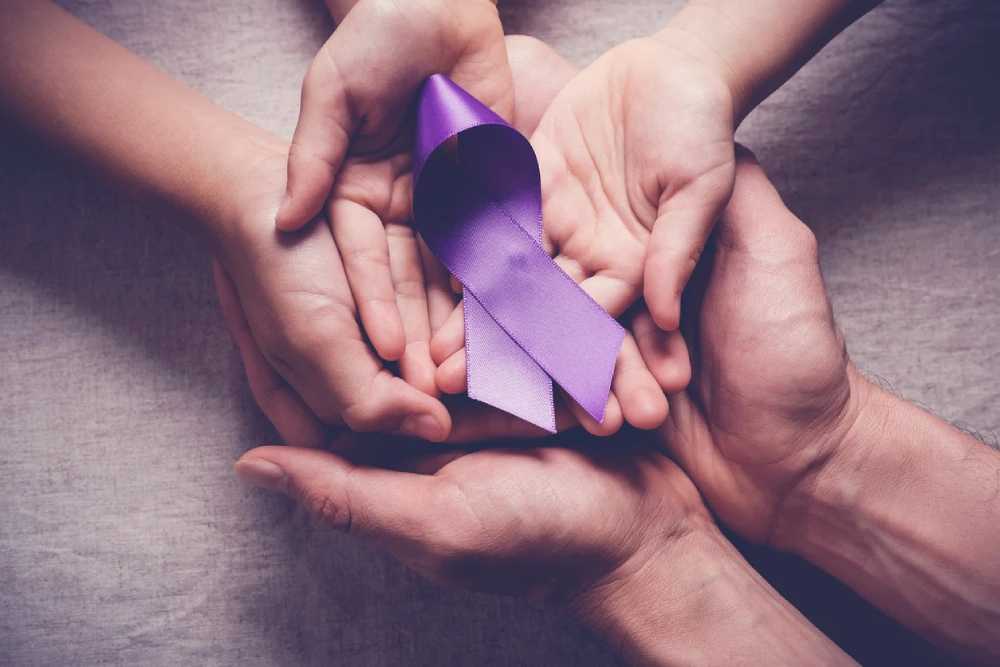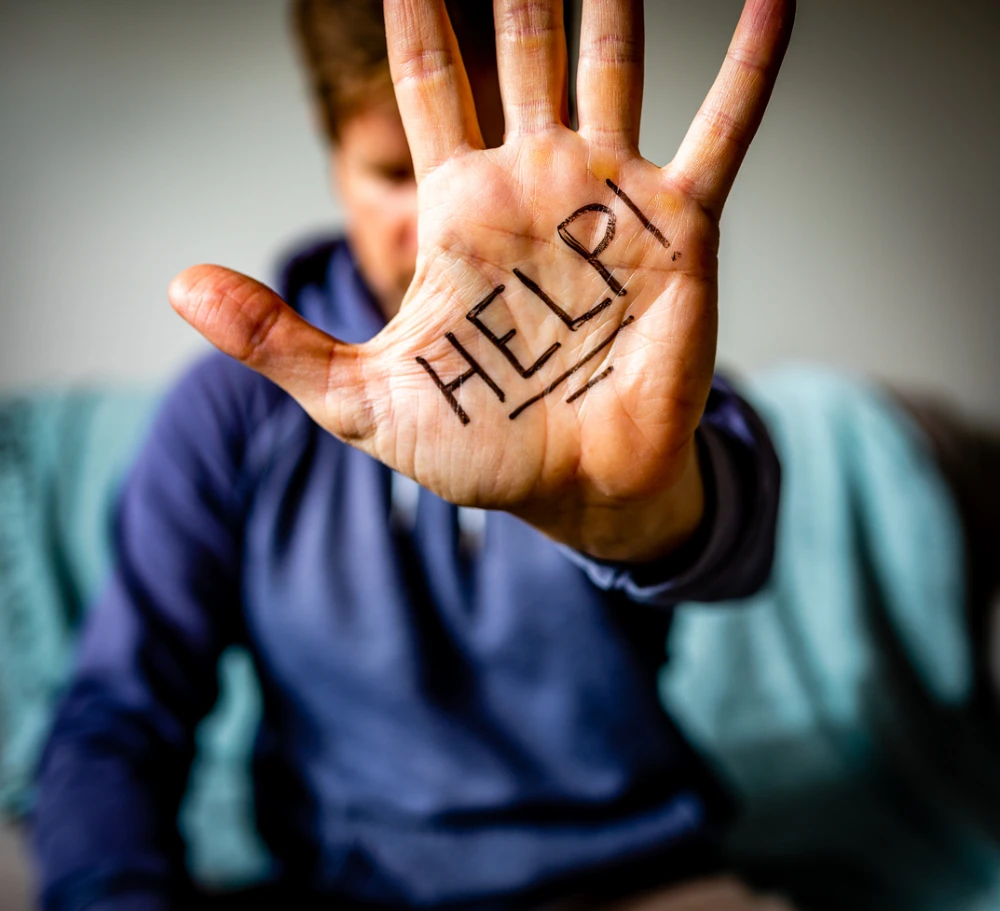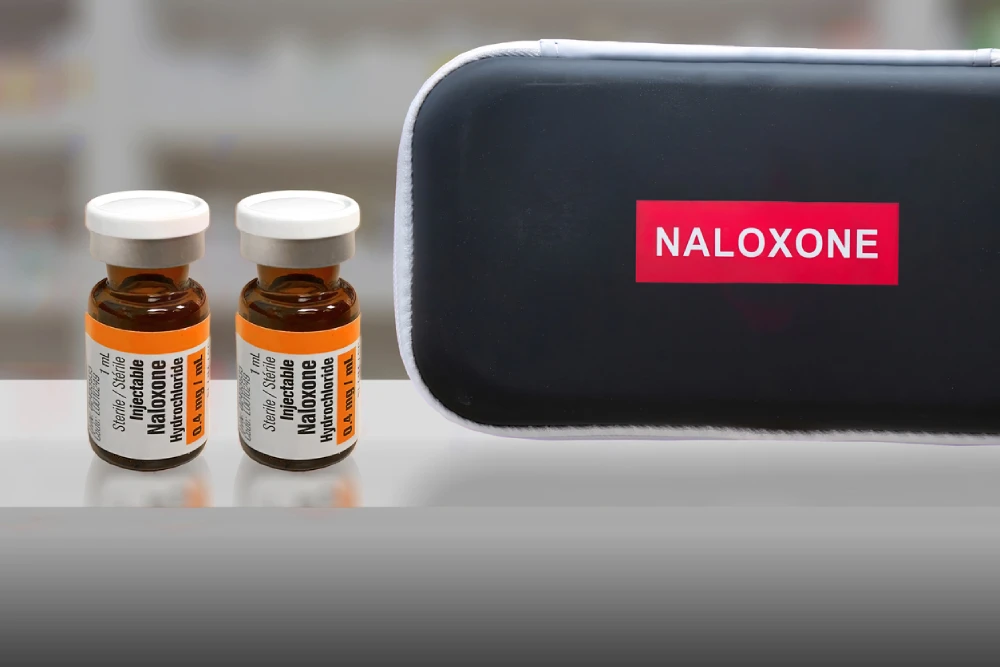Did you know the Public Health Agency of Canada found that an average of 20 people lose their lives to opioid-related overdose every day in Canada?
That’s roughly 7146 Canadians in 2024 alone.
Behind the statistics are families forever changed, communities deeply affected, and a healthcare system working tirelessly to keep up.
At PharmaChoice, we believe overdose prevention is more than a health initiative; it’s a shared community responsibility.
We’ve seen firsthand how education, awareness, and access to life-saving tools like naloxone can make a difference. And while the numbers are sobering, they also remind us why collective action is so critical.
Let’s explore how communities across Canada can step up, save lives, and work together to turn the tide on this public health crisis.
Overdose Crisis in Canada – What Every Community Needs to Know
Canada is in the midst of a national overdose crisis, with opioids leading the charge.
To understand how we can prevent overdoses, we need to look more closely at the underlying causes and the people most at risk.
Causes and Risk Factors of Overdose
The current overdose epidemic is driven by a range of factors, but perhaps the most alarming is the increasingly toxic illicit drug supply.
Today, many illicit substances are contaminated with fentanyl or fentanyl analogues, which are up to 50 times more potent than heroin and accounted for 74% of all opioid toxicity deaths in 2024, a 42% increase since 2016.
Other key contributors include:
- Poverty, homelessness, and trauma: These social determinants of health increase vulnerability to substance use and reduce access to healthcare and support.
- Mental health challenges: Depression, anxiety, and unresolved trauma often co-occur with substance use, making it more difficult to break the cycle.
- Stigma and discrimination: Many individuals fear judgment or legal consequences, preventing them from seeking help.
- Rural and remote barriers: People living in isolated communities often have limited access to harm reduction services, addiction care, or even emergency support when an overdose occurs.
Vulnerable Populations
While substance use can affect anyone, certain groups are disproportionately impacted. Recognizing and supporting these populations is critical to any overdose prevention strategy.
- Youth and young adults: Many begin experimenting with substances in adolescence, and the unpredictability of today’s illicit supply makes even first-time use dangerous.
- Indigenous communities: Due to the lasting impacts of colonialism, intergenerational trauma, and systemic barriers to care, Indigenous people are at significantly higher risk for overdose.
- Rural and remote drug users: These individuals often use alone and far from emergency services, making timely interventions difficult.
By identifying these groups and acknowledging their unique challenges, we can tailor prevention efforts and make support more accessible to those who need it most.

Overdose Prevention Through Education and Awareness
Prevention begins long before an overdose occurs. It starts with education, awareness, and open conversations that reduce stigma and empower people with knowledge.
Communities that invest in these strategies are more resilient, more responsive, and ultimately, better equipped to save lives.
Public Education & Awareness
One of the most effective tools for prevention is broad public education that normalizes conversations about substance use and reduces misinformation.
This can be done in a variety of ways.
- Schools can introduce age-appropriate education around drug safety, decision-making, and mental health.
- Faith groups and spiritual communities can provide non-judgmental spaces where individuals and families can learn about overdose risks and access support.
- Workplaces can integrate overdose awareness into employee wellness programs, ensuring that staff know how to recognize signs of overdose and respond appropriately.
Education isn’t just for those who use substances—it’s for everyone. When the general public understands overdose risk, stigma fades, empathy grows, and communities become better first responders.
Community Mobilization Helps Prevent Overdose
Beyond public education, community engagement is essential. When local organizations work together to prevent overdose, they create a safety net that reaches people before, during, and after a crisis.
Some examples of community supports and programs include:
- The Centre for Addiction and Mental Health (CAMH): Canada’s largest mental health teaching hospital. They conduct research, provide training, offer clinical care, and develop health promotion and prevention strategies.
- The Canadian Mental Health Association (CMHA): Most notably through their SOS (Safer Opioid Supply) program, using evidence-informed interventions. This program helps reduce reliance on the toxic street supply by providing high-risk people with a legal, pharmaceutical-grade supply.
- The Canadian Centre on Substance Use and Addiction: Supports evidence-informed policies and community programs aimed at reducing harm.
- Take-Home Naloxone Kits: Naloxone, a fast-acting medication that temporarily reverses the effects of an opioid overdose, is now widely available from pharmacies, including many PharmaChoice pharmacies. These kits are a frontline defence in community overdose response, providing first responders with the valuable time they need.
Community members, service organizations, and healthcare providers must all play a part. Each connection and every conversation helps build a stronger safety net.
Good Samaritan Laws & Policy Support
Legal protections also play an important role in overdose prevention. Many people hesitate to call for help during an overdose because they fear arrest or legal consequences.
That’s why Canada’s Good Samaritan Drug Overdose Act is so important.
This law protects individuals from possession charges when calling 911 in the event of an overdose, whether for themselves or someone else.
It gives people the confidence to act quickly without hesitation, which can make the difference between life and death.
Knowing about these protections and sharing them widely is key to building a response-ready community.
Harm Reduction Strategies That Save Lives from Overdose
Harm reduction strategies acknowledge that abstinence isn’t always immediately possible, and instead focus on reducing the health and social risks associated with substance use.
When implemented effectively, harm reduction can dramatically lower overdose deaths and improve quality of life.
How Supervised Consumption Sites Prevent Overdose Deaths
Supervised consumption sites, also known as safe consumption or safe injection sites, offer a controlled environment where individuals can use substances under the supervision of trained health professionals.
These spaces are stocked with emergency supplies like oxygen and naloxone, and staff are prepared to intervene in the event of an overdose.
Evidence presented in a 2023 press release from Insite, Canada’s first supervised consumption site in Vancouver, shows the impact clearly:
- Over 4 million visits since 2003
- Over 11,000 overdoses reversed on-site
- More than 71,000 referrals to off-site services
- Zero overdose deaths within the facility
These services save lives while connecting people to health care, detox, and housing supports, serving as a vital bridge to long-term recovery.
Safer Supply & Opioid Agonist Therapies
One of the most promising overdose prevention strategies is safer supply, prescribing legal, pharmaceutical-grade alternatives to the toxic street drug supply.
These prescribed opioids are carefully dosed and monitored to reduce the risk of accidental overdose.
Common medications include:
- Methadone: A long-acting opioid that helps manage withdrawal symptoms and reduce cravings.
- Buprenorphine-Naloxone: A partial opioid agonist with a ceiling effect that lowers overdose risk.
- Slow-release oral morphine (SROM): Used in patients who don’t respond well to the two treatments listed above.
These therapies fall under the umbrella of Opioid Agonist Treatment (OAT), which is considered the gold standard for managing opioid use disorder.
By stabilizing individuals, OAT helps reduce illicit use, improve mental health, and lower the risk of fatal overdose.
Using Drug Testing and Naloxone to Prevent Overdose
Another cornerstone of harm reduction is drug checking technology, such as fentanyl test strips. These allow individuals to test substances before use, alerting them to the presence of fentanyl or other harmful adulterants.
In parallel, naloxone continues to be one of the most effective tools in overdose reversal. This life-saving medication temporarily blocks the effects of opioids and can restore breathing within minutes of administration.
At PharmaChoice, we’re proud to offer naloxone kits at many of our pharmacies across the country. We encourage community members to carry naloxone, learn how to use it, and talk about it openly. Having a kit nearby could mean the difference between life and death.
To learn more, talk to your local PharmaChoice pharmacist.
Expanding Access to Overdose Treatment and Recovery Support
Long-term solutions require accessible treatment, ongoing mental health support, and wraparound care that addresses the root causes of substance use.
Without these services, individuals remain vulnerable to future overdoses.
Why Immediate Treatment Access Is Critical in Overdose Recovery
When someone survives an overdose, the window for meaningful intervention is brief. Rapid connection to addiction treatment and mental health care can significantly reduce the likelihood of recurrence.
Equally important is access to mental health professionals, trauma-informed counselling, and crisis response teams who understand the complexities of addiction.
Supporting Long-Term Recovery to Reduce Overdose Relapse
Sustainable recovery involves more than medications. People recovering from substance use need support systems that address the social and structural factors that contributed to their use.
Key pillars of long-term success include:
- Stable housing: Programs like Housing First show that secure shelter improves recovery outcomes.
- Employment and skills training: Offering purpose and structure during recovery.
- Peer support networks: Many individuals benefit from connecting with others who have shared lived experiences, whether through in-person groups or virtual communities.
When people feel safe, supported, and connected, their chances of sustained recovery and avoiding future overdoses increase dramatically.
Pharmacy Integration
As one of the most accessible points of care in the healthcare system, pharmacies have a unique role to play in supporting both overdose prevention and recovery.
At PharmaChoice pharmacies, we go beyond dispensing medications. Our pharmacies offer:
- Private consultations to discuss treatment options and medication plans
- Customized compounding for individuals with complex needs
- Home delivery services for patients who struggle with mobility or transportation
- Ongoing monitoring and collaboration with prescribers and mental health providers
We believe in building trusted relationships with patients and their caregivers, making our pharmacies a safe, supportive space on the path to recovery.

Community Organizations at the Frontline of Overdose Prevention
While pharmacies and healthcare providers play essential roles in overdose prevention, grassroots organizations are often the first responders in their communities.
These groups work on the frontlines, offering practical support, cultural understanding, and peer-driven compassion to those most at risk. Their work fills gaps and reaches people that traditional systems often miss.
Grassroots Outreach & Peer Services
Peer-led outreach services are built on trust, empathy, and lived experience. They empower individuals who use substances by offering harm reduction tools, emotional support, and real-time response in both urban and remote areas.
Key services include:
- Hotlines and virtual support: The National Overdose Response Service (NORS) acts as a Canada-wide virtual safe consumption site. Individuals can call a trained peer who stays on the line while they use drugs, dispatching emergency services if necessary.
- Mobile apps and rural outreach: In areas where services are scarce, apps and texting services provide support to those using alone, helping reduce fatal outcomes.
- Peer-driven initiatives like Toward The Heart and CAPSA (Community Addictions Peer Support Association) deliver outreach, education, naloxone training, and community-building opportunities.
These services operate on the principle that connection is prevention. When individuals feel seen and supported, they’re more likely to engage with care and reduce risky behaviours.
Collaboration with Municipal Agencies
Addressing the overdose crisis requires integrated community responses, where municipal agencies, healthcare professionals, public health departments, and grassroots organizations work together.
Examples of effective collaborations include:
- Joint harm reduction task forces with public health units
- Housing programs that partner with addiction services and local law enforcement
- Funding streams that support overdose prevention through community-based programs.
When municipal governments invest in these partnerships, communities become stronger, more informed, and better equipped to save lives.
Reducing Stigma to Strengthen Overdose Prevention Efforts
Stigma is one of the greatest barriers to effective overdose prevention. It prevents people from seeking help, fuels discrimination, and isolates those who are most vulnerable.
When individuals feel judged or criminalized for their substance use, they are far less likely to access healthcare, carry naloxone, or engage in treatment.
This creates a dangerous cycle where silence and secrecy increase the risk of overdose. Breaking this cycle requires intentional, community-wide efforts.
Public Campaigns
Education campaigns play a major role in challenging misconceptions and shifting public attitudes. These efforts highlight the humanity behind addiction and emphasize that substance use is a health issue, not a moral failing.
Examples include:
- Awareness events like International Overdose Awareness Day
- Social media initiatives that share stories of recovery and resilience
- Posters and videos featuring diverse voices, especially those from impacted communities
These campaigns make it easier for people to ask for help and for others to offer it.
Community Dialogues
Creating safe spaces for honest discussion is another essential step in reducing stigma. Town halls, school events, and local panels allow people to share experiences and learn from one another.
Topics may include:
- The science of addiction and brain chemistry
- The role of trauma and mental health
- Harm reduction as a compassionate, evidence-based approach
When people hear directly from peers, healthcare professionals, and families affected by overdose, the issue becomes less abstract and more urgent.
How Communities Measure Overdose Prevention Impact
To truly address the overdose crisis, communities must do more than take action. They must evaluate what’s working.
Measuring outcomes helps identify gaps, improve programs, and ensure resources are making a difference.
Outcome Metrics
Tracking real-world outcomes allows communities to assess the impact of their prevention strategies.
Key indicators include:
- Number of overdose reversals: Often reported through EMS, emergency departments, and naloxone kit use data.
- Emergency department (ED) visits for overdoses: A decline may suggest that harm reduction and awareness efforts are working.
- EMS activations: Regular tracking helps identify trends, hotspots, and needs for targeted response.
When these metrics improve, it’s a strong sign that prevention efforts are saving lives.
Data-Sharing & Evaluation
To be effective, overdose prevention efforts need to be collaborative and data-informed. Sharing surveillance data across organizations, such as public health units, pharmacies, hospitals, and community groups, ensures timely responses to emerging threats, like contaminated drug batches.
Surveillance tools include:
- Local and national drug use trend reports
- Community drug alert systems
- Academic partnerships to evaluate program effectiveness
Talk To Your Local PharmaChoice Pharmacist About Take-Home Naloxone Kits Today
The overdose crisis continues to affect families, communities, and healthcare systems across Canada, but it is not insurmountable.
Every conversation, every naloxone kit, every moment of compassion helps bring us closer to a future where preventable deaths are no longer daily headlines.
Whether you’re someone who uses substances, a concerned family member, a community advocate, or simply a neighbour who wants to help, your actions matter.
Prevention doesn’t just happen in hospitals or treatment centres. It happens in schools, workplaces, living rooms, and at your local pharmacy.
At PharmaChoice, we believe that pharmacies are more than a place to pick up prescriptions; they are lifelines for community health.
As accessible and trusted healthcare hubs, we are uniquely positioned to support overdose prevention through education, services, and compassionate care.
Visit your local PharmaChoice pharmacy today to access life-saving naloxone kits, expert overdose prevention advice, and personalized support.
Overdose FAQs
What is the first aid for an overdose?
If you suspect someone is overdosing:
- Call 911 immediately
- Administer naloxone if available
- Perform rescue breathing or CPR if necessary
- Stay with the person until help arrives
It’s important to act fast. The Good Samaritan Drug Overdose Act protects you from possession-related charges when calling for emergency help.
How can someone avoid accidental drug overdose?
To reduce the risk of accidental overdose:
- Avoid using alone
- Use small amounts first (“test dosing”)
- Never mix opioids with alcohol or other depressants
- Use fentanyl test strips when possible
- Carry naloxone
If you or someone you know is using opioids, talk to a healthcare provider or visit a pharmacy to learn more about harm reduction strategies.
What causes drug overdose?
Drug overdoses can occur due to:
- High doses or mixing substances
- Contaminated drug supply, often with fentanyl
- Low tolerance, especially after a period of abstinence
- Using alone, where help is unavailable
- Underlying health issues, like respiratory or liver conditions
- Using in a new environment





